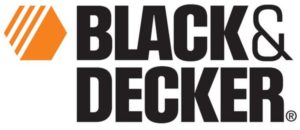Black+Decker Product Reviews and Guides
In 1910, S Duncan Black and Alonzo G. Decker set up a small machine shop in Baltimore, Maryland in a rented warehouse. Armed with a $1200 loan and $600 from the sale of Black’s second-hand car, they founded the Black & Decker Manufacturing Company with Black as president.
They began manufacturing products designed by others: machinery for the U.S. Mint, a milk bottle caps machine, and a cotton picker. In 1916 however, the two tool engineers began designing their own products.
Their first product containing the patented pistol–grip–and–trigger–switch was a ½ inch portable electric drill. The trigger switch was modeled after the mechanisms in a Colt revolver and the universal motor was the first to be used in electric power tools. Weighing 21 ½ pounds the electric drill was much lighter and easier to handle than the German tools available. Paying $230 for the drill was deemed as inexpensive in the 1900s.
The company was growing. During the next 10 years, they would expand the plant constructed in 1917 outside Towsend, Maryland three times. In 1918 the first two service centers opened, in Boston and New York.
Nine years after the company was founded annual sales exceeded $1 million.
Their aggressive salesmanship included outfitting a monoplane to showcase their tools and full–page ads in the Sunday Evening Post in 1921.
It wasn’t long before Black & Decker became a global brand; they started by expanding to Canada in 1922, the UK in 1928, and Australia in 1929. They continued global expansion in the 50s and 60s, including manufacturing operations in South Africa and Australia.
During the Great Depression, the company almost went bankrupt despite huge layoffs including Alonzo Decker’s son. Loyal employees continued working without pay and large capital influx from outside investors kept the company afloat.
In 1946 Black & Decker Manufacturing Company started the do-it-yourself revolution with its home-utility line and accessories. This breakthrough was initiated when they found out workers were taking portable drills home for personal use.
During the 60’s they introduced the world’s first cordless electric drill and the cordless hedge trimmer as the first cordless outdoor product. They contributed to the space program providing NASA astronauts with a cordless minimum-torque reaction space tool used under weightless flight conditions.
The portable workbench was launched in the U.K. followed by the dust-buster handheld cordless vacuum cleaner and in the 90s the VersaPak cordless power tool system, the Snakelight flexible flashlight, and the mouse sander.
Autoselect technology created tools in 2009 that automatically selected the correct settings. The steam mop in 2011 was followed by the world’s first motion–sensing screw driving controls in 2012 and the first 1/3 sheet sander with a dual fan system and wrap around dust collection facility.
The hexagon logo represented the hexagonal nut, the universal fastener symbolic to the tool trade. For 102 years the hexagon was in the logo until the rebranding of Black & Decker in 2014 to Black + Decker. (#1)
In 2010 Black & Decker merged with Stanley Works to become Stanley Black and Decker and in 2017 they purchased Craftsman from Sears. Other brands they own include Lenox, CribMaster, Irwin Tools, and DeWalt.
The universal 2-year warranty is subject to the product used in the home environment.
Links
Brands owned
https://www.popularmechanics.com/technology/gear/a28359/megabrands-tools-graphic/



